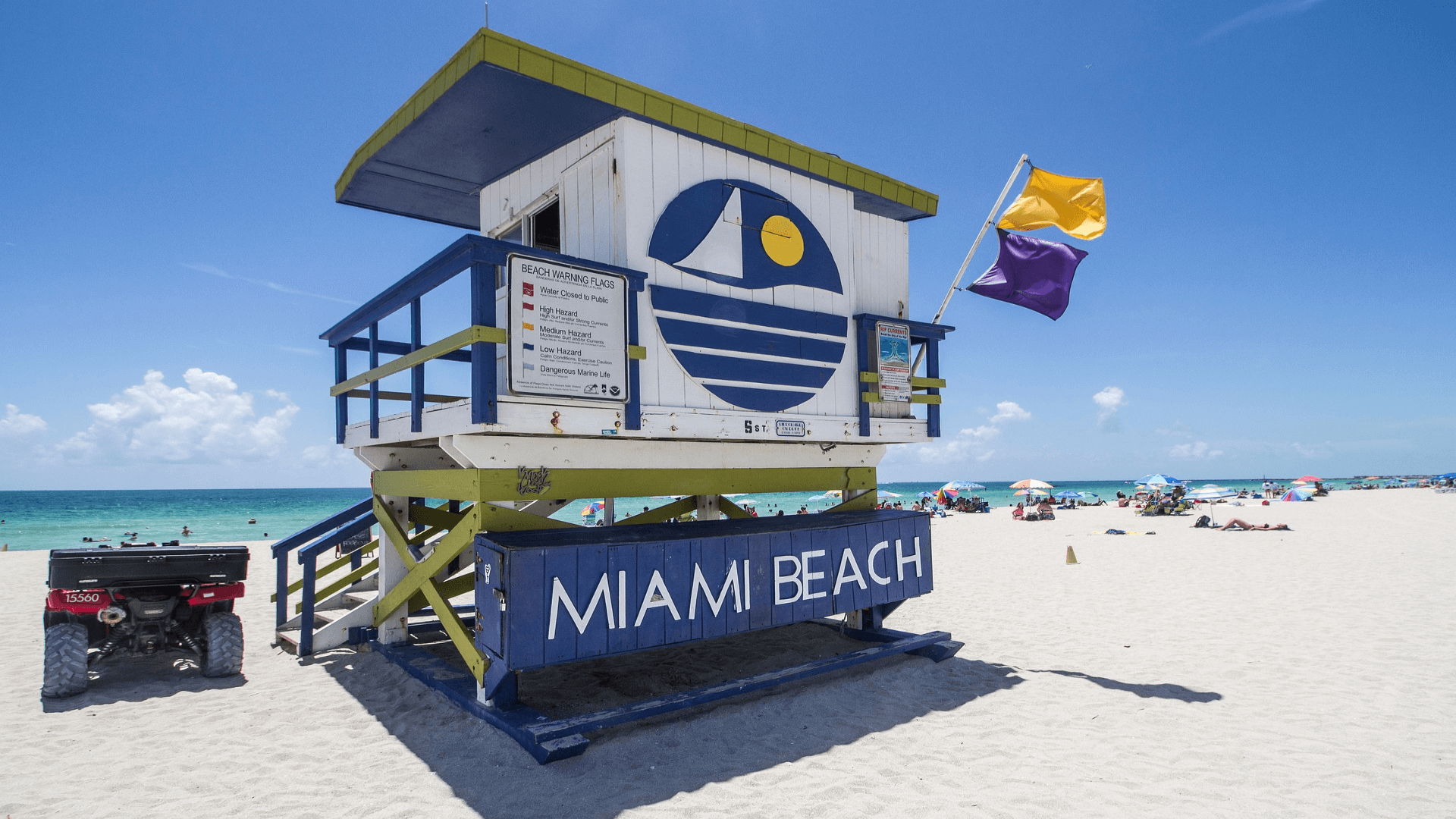If you’re planning a trip to Miami, you understandably want to make the most of your time here. No matter what kind of vacation you have in mind, we’re confident in saying that it features blue skies, azure seas, beautiful beaches, and gorgeous weather! But are these conditions a constant in Miami? Is it always sunny in our part of the Sunshine State?
We’ve got the answers you’re looking for in this blog! Of course, there’s no one-size-fits-all answer to the question, "When is the best time to visit Miami?" But as the leader of Miami Food and Culture Tours, we want to share our local insights to help you plan a visit at a time that’s right for you.
Scroll down to get started! Please don’t hesitate to contact us if you have any questions about our public or Private Miami Food and Culture Tours.

Let’s start by getting an overview of Miami’s weather. Our city’s climate is renowned for its abundant sunshine and warm temperatures. We do see 248 sunny days per year, after all! But it’s also not one long continuous summer season. Throughout the year, Miami experiences variations in weather conditions that can influence your experience.
Generally speaking, Miami enjoys a subtropical climate with mild winters and hot, humid summers. Average high temperatures in the winter months come in around 75°F, but this rises to 90°F in summer. And those summer months are also the wettest, with June seeing an average precipitation of 9.3 inches. But while rain showers are common in the heat of the summer, they often pass quickly, giving way to sunny skies once again.
For a better understanding, let’s take a closer look at what to expect from each season in Miami.

Winter is peak season in Miami, attracting visitors from colder climates who seek refuge from the chill. From December to April, Miami experiences cooler, more pleasant weather with lower humidity levels. This makes it an ideal time for outdoor activities like beach lounging, seeing the Art Deco district, and dining al fresco at our many world-class restaurants.
Naturally, with the beautiful weather comes increased crowds and higher prices for accommodations and activities. If you're planning a winter getaway to Miami, be sure to book well in advance to secure the best deals and avoid missing out.
December, January, and February are also the driest months of the year, with average precipitation rates of 1.83, 2.01, and 2.08 inches.

Spring is a beautiful time to visit Miami, as temperatures start to rise, but the humidity of summer is still a way off. From March to May, you can expect warm days, cooler nights, and plenty of sunshine. While there may be more rain than in winter, it's typically not enough to put a dampener on your plans — this is still the tail end of high season, after all.
One thing to keep in mind is that spring break is in full swing during this time, especially in March. Whether this is appealing or not depends on your perspective! If you enjoy the lively atmosphere and energy of spring breakers, you'll find plenty of parties and events to keep you entertained. However, if you prefer a quieter experience, you may want to plan your visit for another time.
March and April remain relatively dry, with average rainfall measuring in at 2.39 and 2.85 inches. May sees a notable increase to 6.21 inches.
Looking for more travel inspiration when you’ve finished here? Be sure to check out our picks for the best things to do in Little Havana, Miami, including our hugely popular Little Havana Food and Cultural Tour.

Summer in Miami is hot, wet, and humid, but it's also when the city truly comes alive. From June to August, temperatures soar into the 90s, and afternoon thunderstorms are common. But when the downpours pass, the beaches are glorious, with warm water and refreshing sea breezes providing relief from the heat. Remember to pack your sunscreen!
Summer is also peak mosquito season, so make sure you have insect repellent too, especially when outdoors in the evening. Whether you’re in town for a corporate event, a bachelorette party, or any other reason, we also recommend wearing long sleeves and pants in light materials like linen for more protection against pesky bites.
As previously mentioned, June is the wettest month of the year with an average precipitation of 9.33 inches. This eases off to 5.7 inches in July and 7.58 inches in August.

Fall in Miami marks the slow transition from summer to winter. Temperatures gradually cool down and the start of the school year brings smaller crowds. From September to November, you can enjoy quieter beaches, lower prices on accommodations, and a more laid-back atmosphere overall.
While fall may not have the same level of excitement as winter or spring, it's a great time to visit if you prefer to avoid the crowds and queues, and if you want to save some money. If you’re planning a peaceful couples’ getaway at this time of year, we think you’ll love our recommendations for the best things to do in Miami for couples.
September still sees relatively high rainfall with an average of 7.63 inches. But this drops to 5.64 inches in October and 2.66 inches in November.

No matter when you visit Miami, there's always something exciting happening in the city. Here are a few cultural calendar highlights to keep in mind when planning your trip:

So, what is the best time to visit Miami? That’s for you to decide now! We hope this blog has inspired and informed you in equal measure! And remember, our Miami Food and Culture Tours aren’t just mouthwatering adventures — they’re truly authentic experiences in the real Miami! Our expert local guides can’t wait to show you around.
Do you have any questions for the Miami Culinary Tours team? Please just contact us for all the answers you need.
This site uses Google reCAPTCHA V3. Read the privacy policy and terms of service for more information.